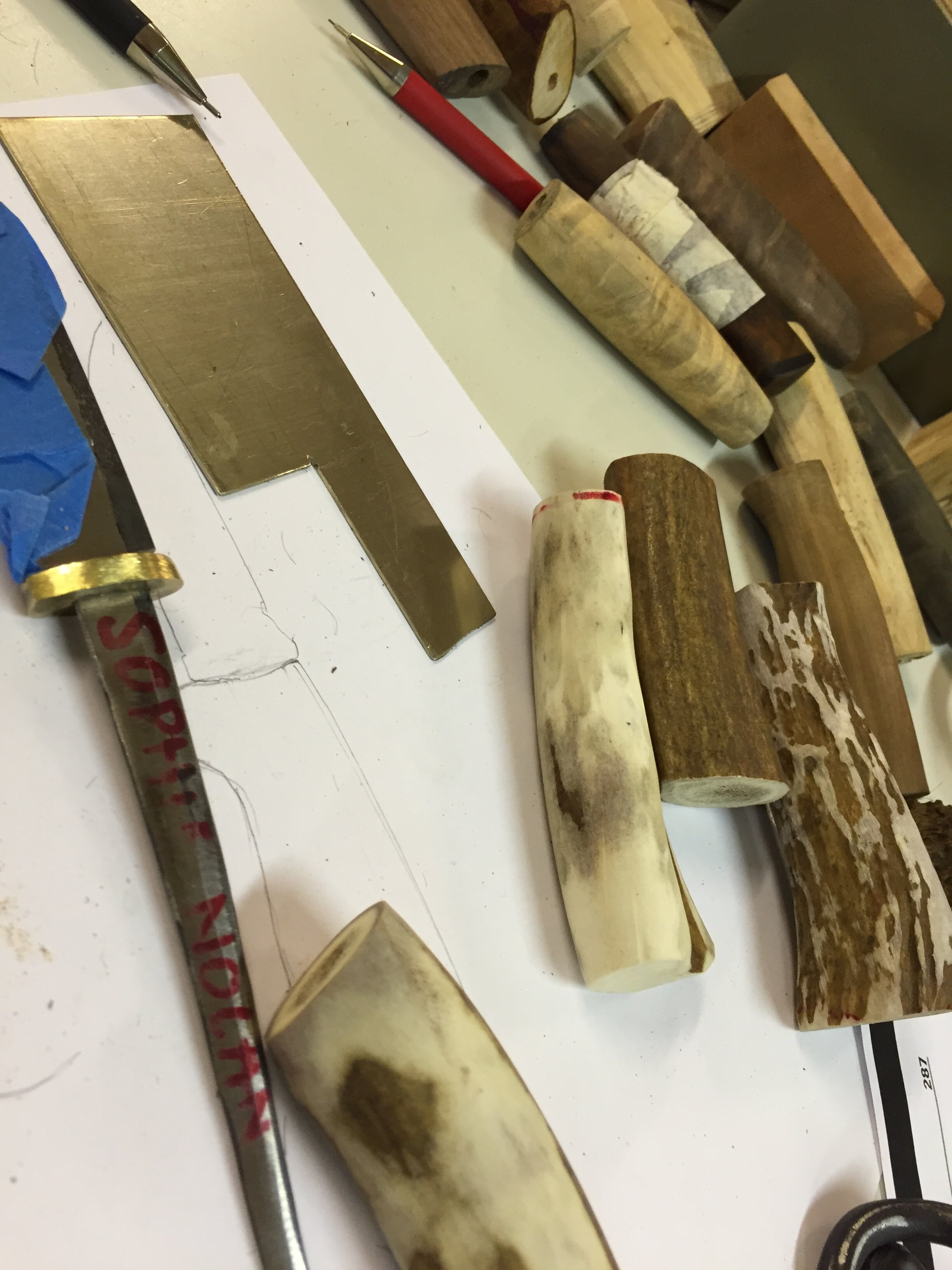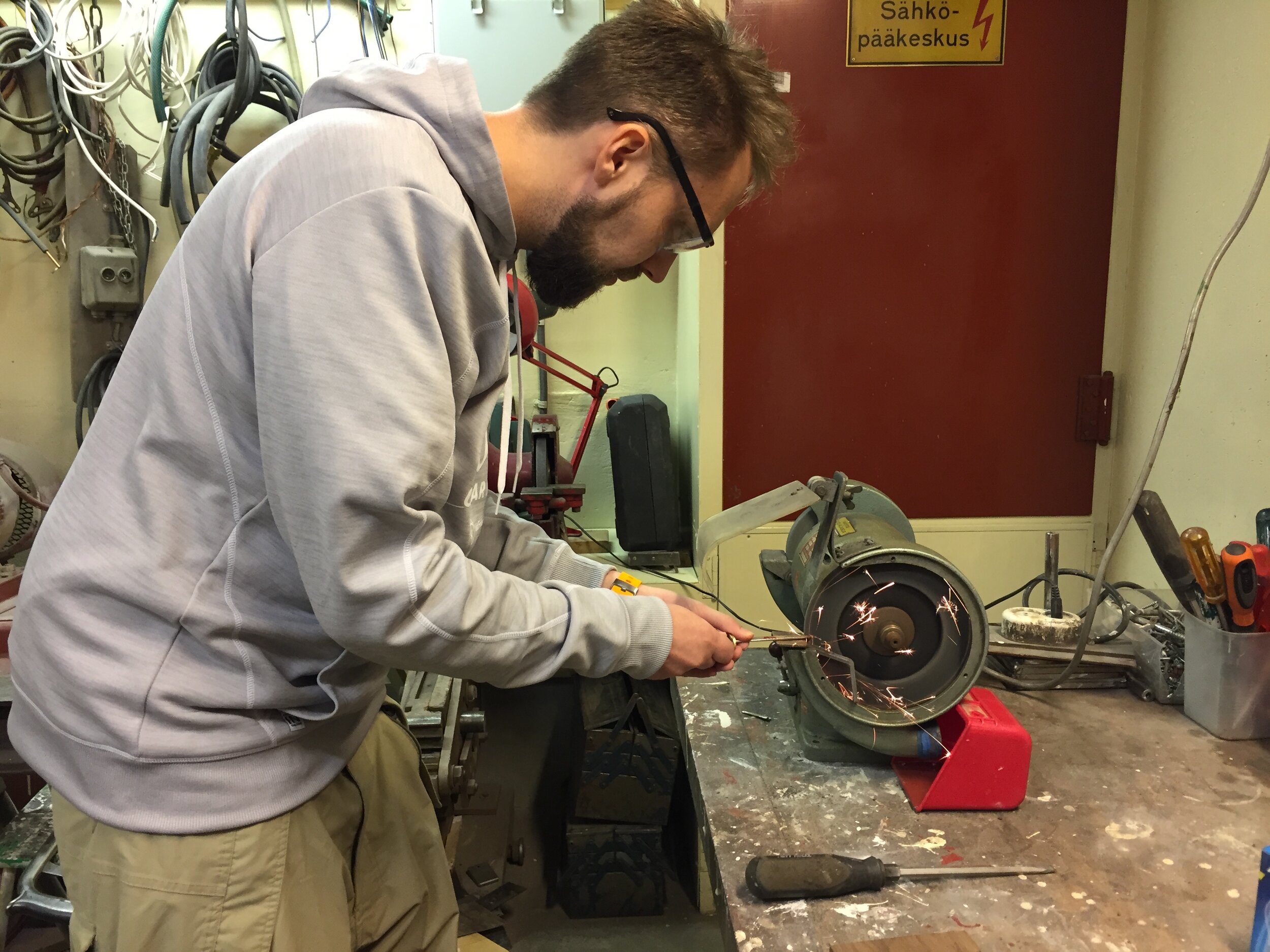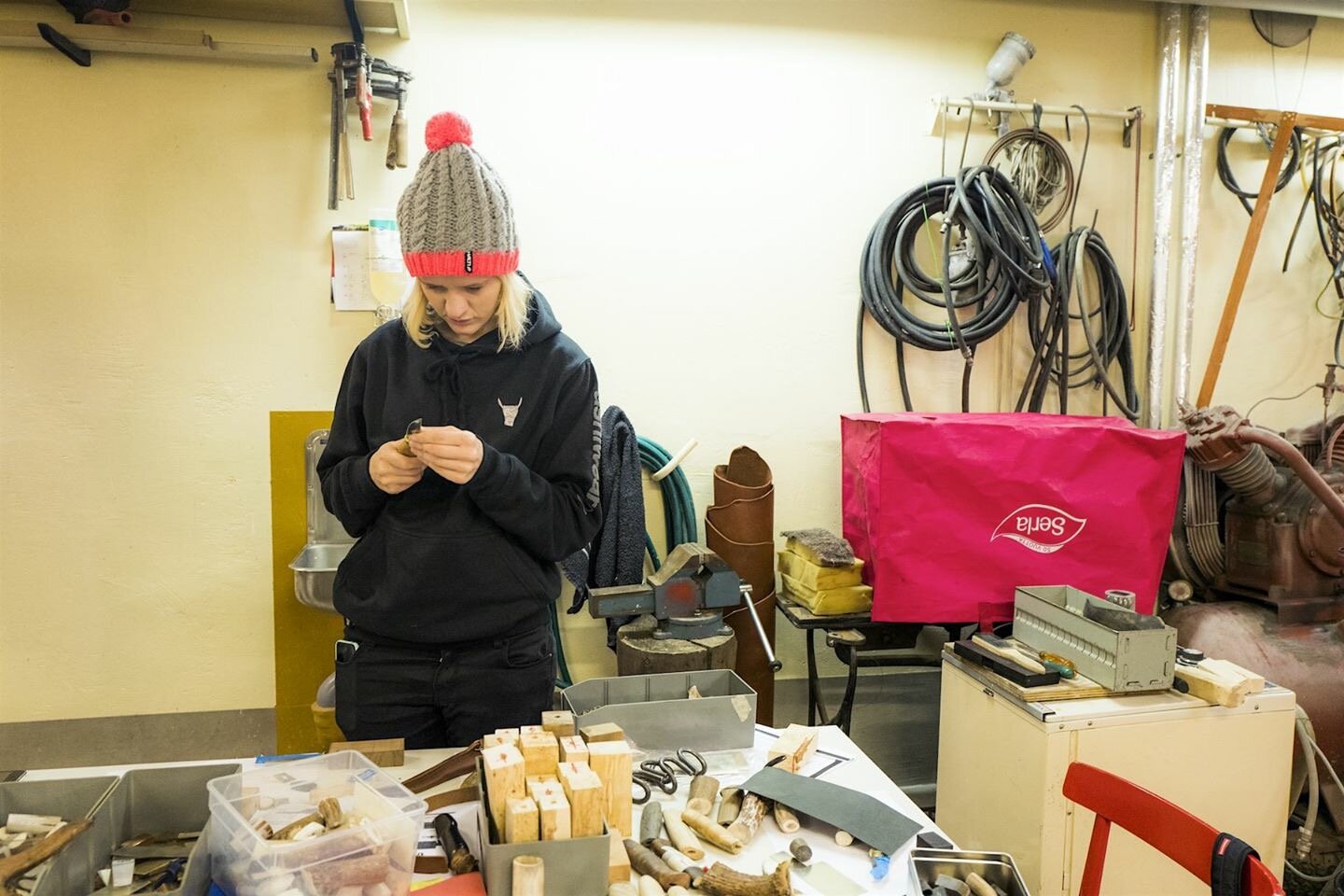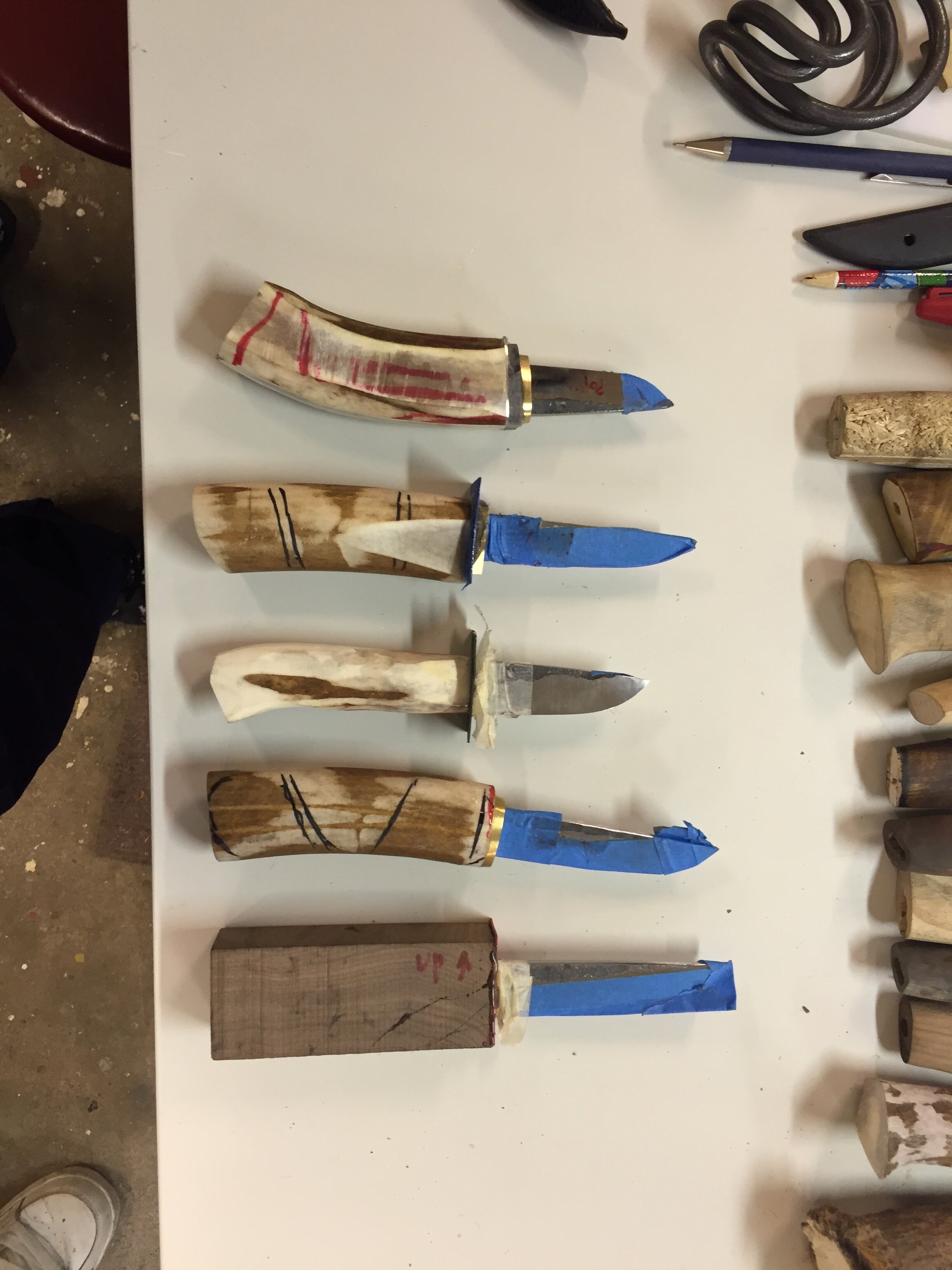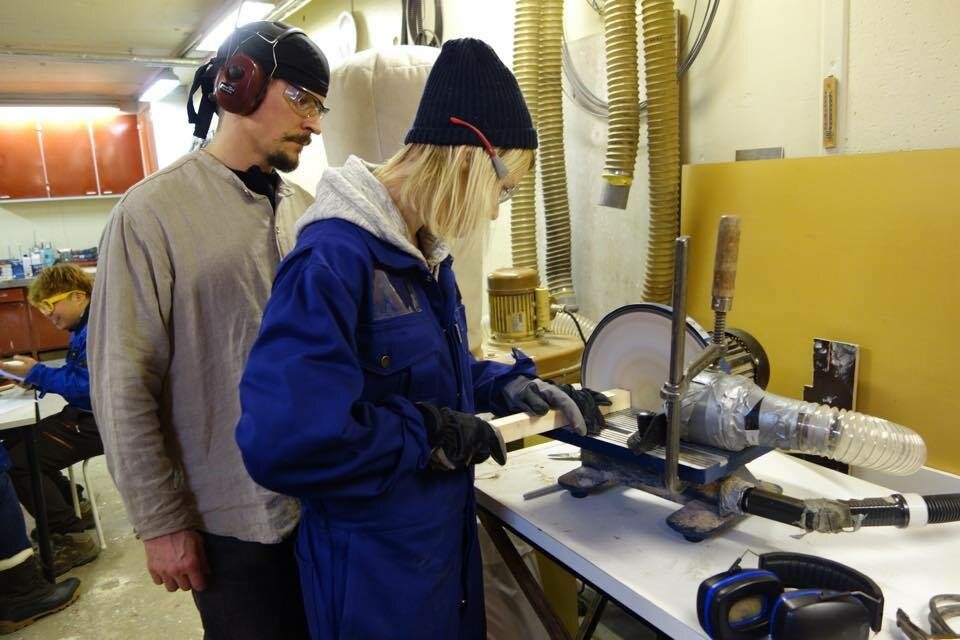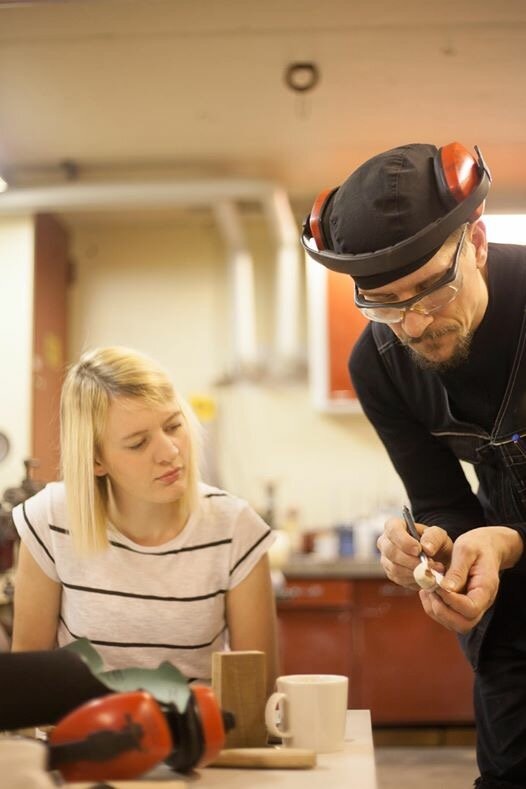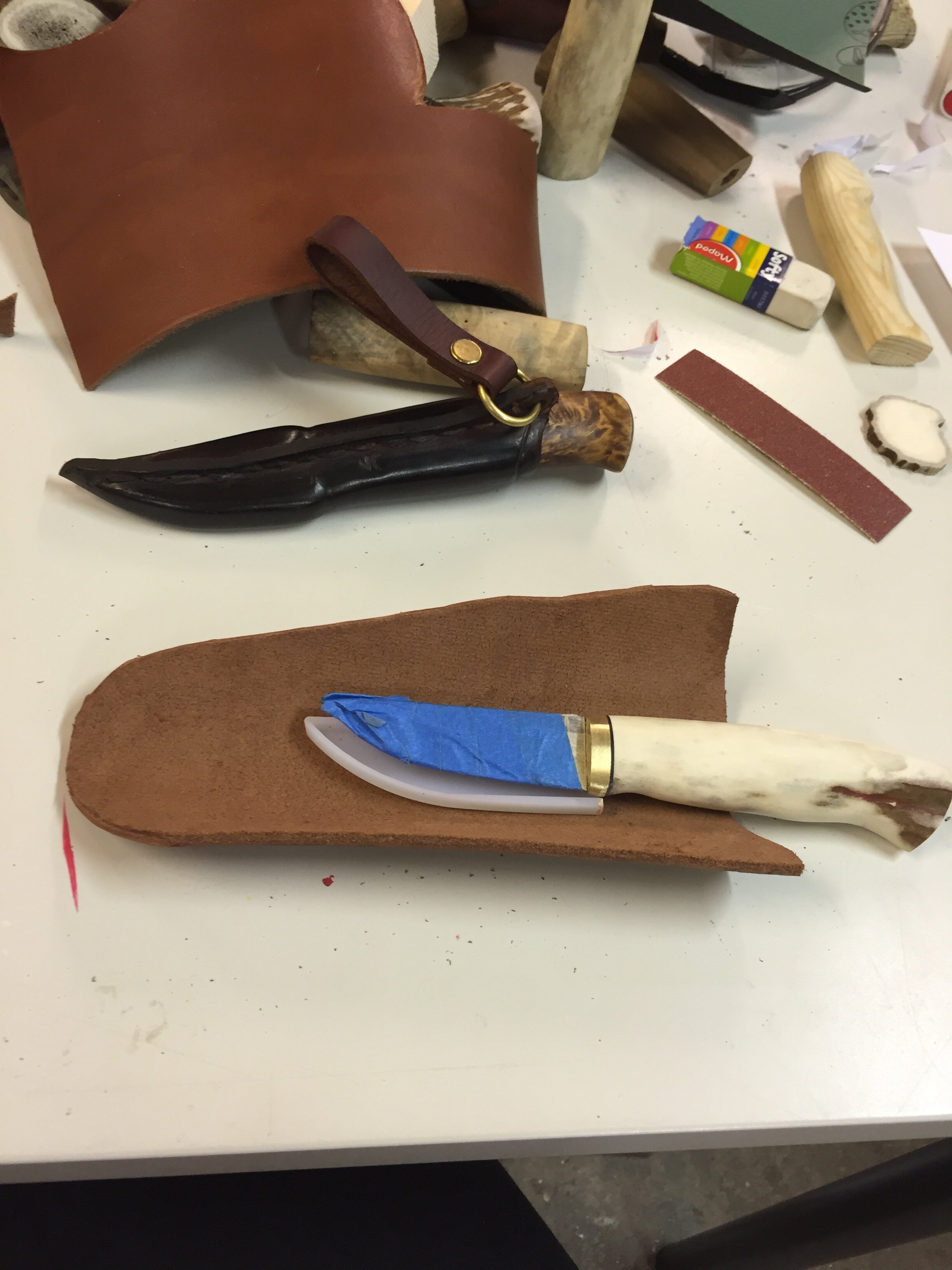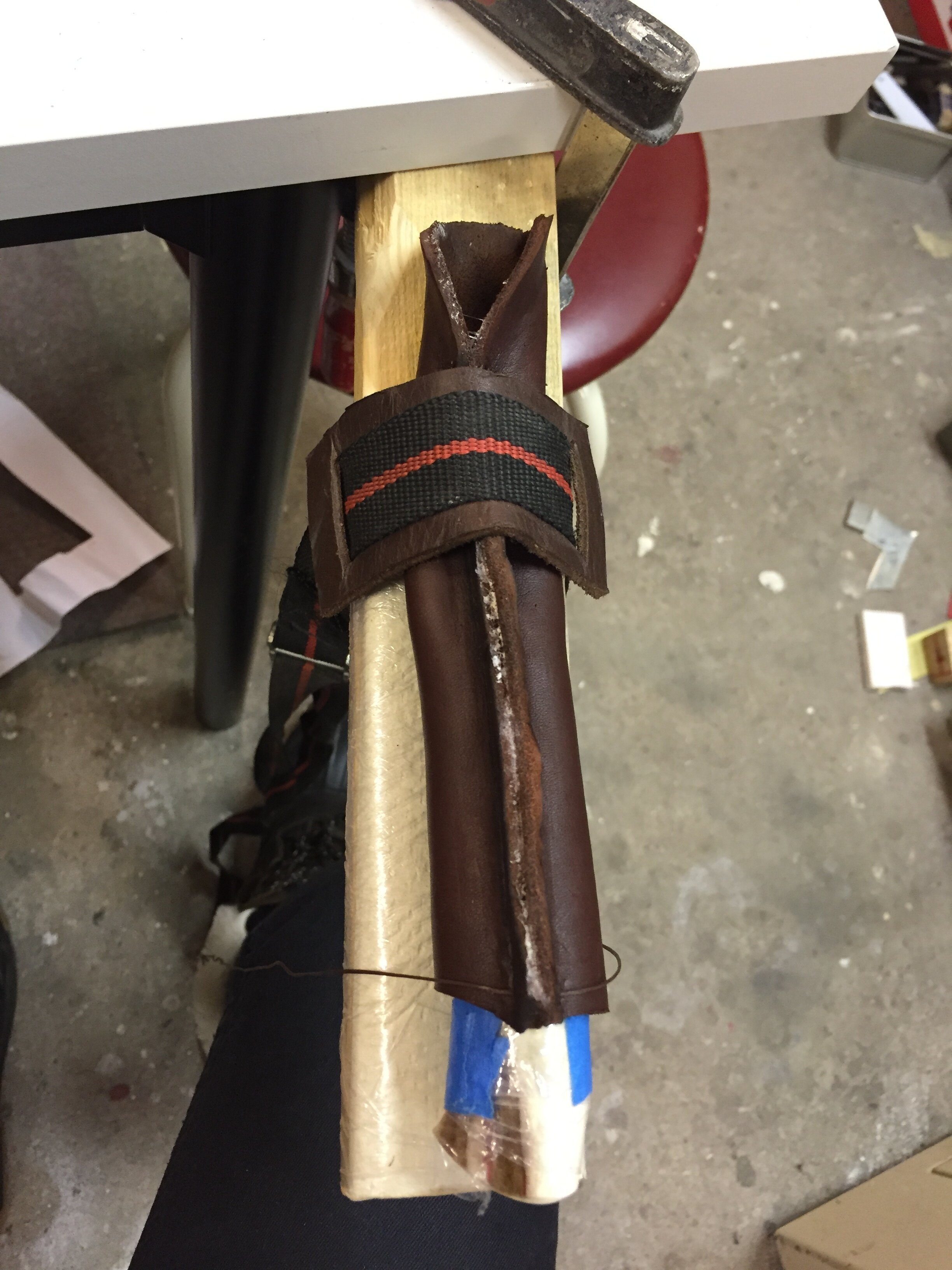Forging my own Finnish Puukko
A few years back I got an incredible opportunity to spend the week with the talented Jouni Kuukasjärvi who crafts beautiful handmade knives as his hobby in Rovaniemi. The Finnish Puukko is a particularly beautiful Scandinavian design that we would we make throughout the week. We started in Jouni’s 200-year-old hut where he performed a traditional blacksmith ritual to welcome us, working the steel before our eyes. As we huddled into the small hut I thought it would be a loud, intimidating process but it was actually very soothing, watching him hammer the steel and place it into the charcoal forge till the steel changed colour. He finished by welcoming us in Finnish whilst marking our foreheads with charcoal from the open fire (I felt a bit like Simba when Rafiki marks him in The Lion King).
Forging our blade
We would be using Carbon Steel for the blade, and spent the evening learning how to start the initial shaping of the knife. The steel is held in the fire until it is heated to a very high temperate (up to 1200c) we were told to ideally wait till it was a yellow/white-ish colour. We then worked the steel by hammering it with as much power as we could, I barely changed the rounded form of the steel so instead began to curl it using the curve on the vice. It wasn’t until the judo master Yuichi shook the hut with the vibrations from his hammering that I even realised the steel could be flattered by human strength. Thankfully Jouni had some art attack style ‘ I prepared these earlier’ blades which we would use for our knives. Otherwise, my snake-shaped disaster would do nothing for my hunger when hunting in the wild.
For the remainder of the week, Jouni’s sister kindly let us use her workshop as the base for our handle and sheaf making. Not only that but she made us daily traditional Finnish treats to restore our energy after skiing, it became my secret highlight of the day. To start the process off we sketched out our knives and drew the shape of the handle we wanted to form. Jouni then provided us with a wide array of different materials to choose from, ranging from elkhorn to curly birch. Each material had different properties that made it ideal for a knife handle, I choose the reindeer horn because it had some beautiful detailing on the edge of it and I felt reindeer was such a strong part of the Lappish culture that it was very apt.
We were then introduced to various power tools in the workshop which helped form and shape our handles, some machines were easier to use than others but it was all very satisfying to see the handle coming together. Reindeer horn was fun to work with but it gave off a horrendous smell when you sanded it, it smelt a bit like wet dog!
Making the sheaf
Once the basic shape of the handle was formed we moved onto the sheaf, again drawing out the initial shape we wanted then cutting it out of leather. You wet the leather in order to sow it up and make it easier to work with, Jouni started us off then we began to puncture and sow together the leather to fit it perfectly to our blade. Whilst the leather is wet you can use a bone folder to shape it around the curves of your knife and create a nice form around your blade. Then add details to the top by etching it out and waiting for the final result once the leather has dried. Once it’s dried, we waxed and polished it making sure it was protected, but it also added a great shine to the leather.
The whole experience from start to finish was fascinating, to see and be involved with creating something of such beauty was a real honor. Jouni’s skill and perfection were admirable and the passion he had for his work was infectious. His precision and the way he worked not only the steel but the way he shaped the leather and sanded the horn - you could tell the immense understanding he had for the materials he was working with and how to sculpt them into such beautiful items. He would settle for nothing but perfection as I found out when he cut off my strap handle after my imperfect placement of the hole was spotted. A detail that I was initially happy to keep but he showed me the pride he took from everything he did and he wanted to make sure that everything was as good as it could be. It was a great first introduction to Finland, and we’ve come away with something very special and unique. It is an experience I will never forget and I learned so much from Jouni. If you would like to see some examples of his stunning handiwork check out his website www.kuukasjarvi.net
The finished puukkos


